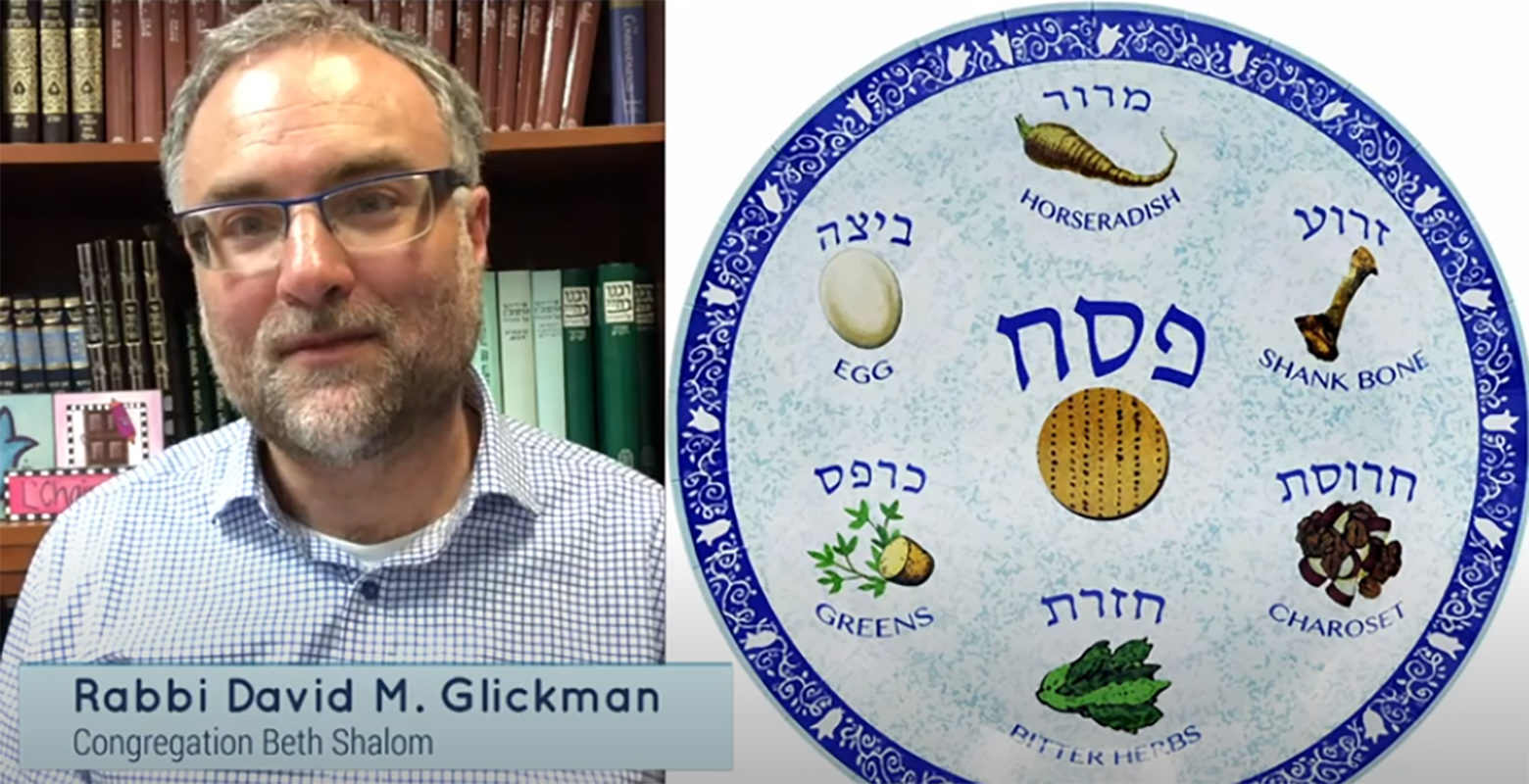Zoom helps organizations bounce back after last year’s cancellations
Last March, as the pandemic hit and shutdowns began just weeks before Passover, organizers cancelled two of the biggest Seders in our community — the JCRB|AJC Unity Seder and the Rabbinical Association’s Community Seder.
And now, with pandemic Passover 2.0 upon us, the situation is much improved. Both events are taking place in what now passes as the new normal: virtually.
Virtual Seders weren’t really an option last year, as video conferencing had yet to become part of our everyday lives. But this year, organizations are well-versed in Zoom technology and the ins and outs of conducting virtual events. Rabbi Sarah Smiley, who is organizing the Community Seder along with Rabbi Josh Leighton, said cancellation was among the options the rabbinical association pondered for this year.
But the association decided to pre-record a Seder and make it available a few days before the holiday, so people can use it for educational purposes beforehand or for their Seders.
“Our goal is for it to feel like we’re all around the same table even though we’re on this video,” Rabbi Smiley said.
Rabbi Smiley said the video became “kind of a choose your own adventure Seder.” She thinks people could use it as a kind of digital Haggadah and have a different experience on different nights, depending on when they pause the video for discussion, or which songs they want to sing, or if they want to fast forward through on either night.
In putting together the video, Rabbi Smiley and Rabbi Leighton had to account for the limitations of virtual events.

“People’s attention span when you’re not sitting together is very different,” Rabbi Smiley said. “A Seder could be a two-to-three-hour experience, but we’re shooting for it to be an hour or less,” she said.
For its Unity Seder, which was held last week, JCRB|AJC settled on a hybrid program that included pre-recorded videos featuring religious, civil and political leaders (both in the Jewish community and the wider Kansas City community) and live components like Zoom breakout rooms where attendees talked in small groups during certain parts of the program.
Sarah Markowitz, JCRB|AJC’s education and program associate, and the Unity Seder planning committee broke the Haggadah into approximately 45 different sections which were then recorded by 45 individuals. In addition to coordinating the video participants, Markowitz spent hours sorting the 230 registrants into breakout room groups to ensure diversity and representation across cultural and religious backgrounds.
“Looking back, it was very ambitious,” she said. “When I started, I just wanted to make the event as meaningful and inclusive as possible.”
Markowitz said it quickly became apparent that there are several pros to hosting a virtual Seder: People who had never attended a JCRB|AJC event before attended the Seder because it was virtual; the audience wasn’t limited to those physically in Kansas City (people Markowitz worked with and went to school with in her home state of California logged on for the event); and the audience size wasn’t limited to how many people an event space could hold. Markowitz said 135 people logged on for the event, which is still more than attendees than they would have had for an in-person Seder.
“I think we had a much wider reach in the virtual space and now we have an amazing video that we can share with people after the event,” she said.
Pre-recorded videos also allowed for participation from area elected officials who likely wouldn’t have been able to attend in person. The Unity Seder featured videos from U.S. Reps. Sharice Davis and Emmanuel Cleaver, who respectively represent districts in Kansas and Missouri, along with U.S. Sens. Roy Blunt of Missouri and Jerry Moran of Kansas, and the mayors of Topeka, Leawood and Kansas City, Missouri.
Being able to include more people in the Seder program is also an advantage from the perspectives of Rabbis Smiley and Leighton.
“Typically for the community Seder, you have one rabbi or two rabbis leading; now we’ll have eight to 10,” Rabbi Leighton said. “Everyone’s going to get a taste of the styles of the Jewish leadership in Kansas City.”
“One of the things I love about this process, we get to see our colleagues in action in a way that we normally don’t get to see,” he added.
Rabbi Smiley said being able to discuss ideas, then creating a slideshow and leading the Seder in person would have been much easier than coordinating all the videos from multiple people, making sure everyone stuck to the timeline, and then figuring out the technical aspects of putting it all together.
Emily Williams, the assistant director of formal and informal Jewish education at The Temple, Congregation B’nai Jehudah, helped with the video editing and a lot of the tech behind the scenes; she also helped with the Unity Seder.
For Markowitz, the hours and hours spent putting the virtual Unity Seder together were worth it once she saw the end result.
“Seeing the video play out with all our community leaders and representatives from different faiths, and being in the Zoom meeting with all of our guests, and seeing the different representation there, that was really meaningful and special,” she said, “and I hope everyone who attended found it really meaningful and special as well.”
LINKS:
Watch the video of the Unity Seder at: www.youtu.be/eTCFo9ffCBM
Sign up to receive the Community Seder video at: www.forms.gle/JxAUxhwXAhM6sV7h8



